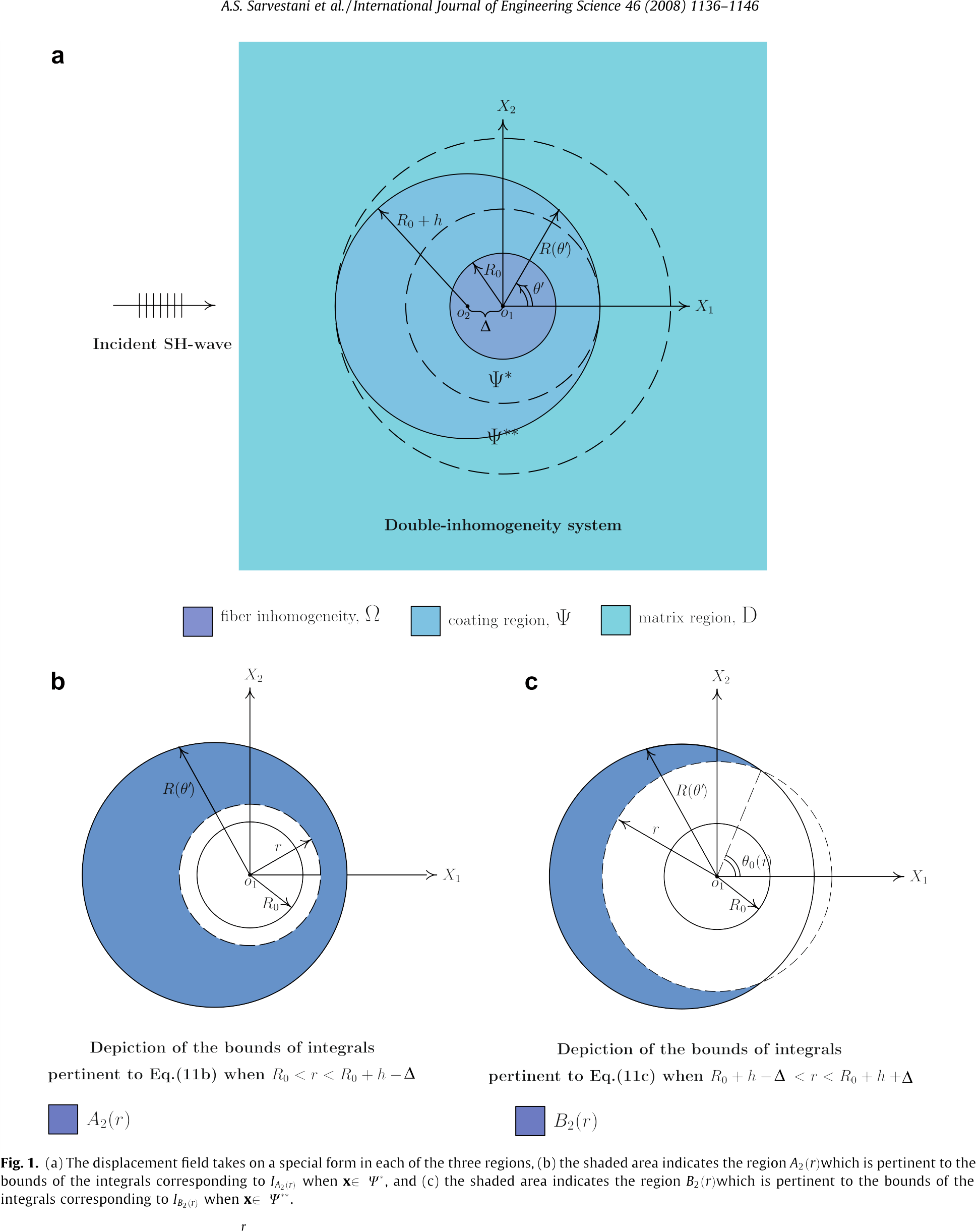Hossein M. Shodja

To date, the existing theories pertinent to the determination of the scattered fields of an inhomogeneity have been limited to certain topological symmetries for which the method of wave-function expansion is widely used. In the literature the wave-function expansion method has also been employed to the case involving concentric coated fiber. An alternative approach is the dynamic equivalent inclusion method (DEIM) proposed by Fu and Mura [L.S. Fu, T. Mura, The determination of elastodynamic fields of an ellipsoidal inhomogeneity. ASME J. Appl. Mech. 50 (1983) 390–396.] who found the scattered field of a single spheroidal inhomogeneity. The pioneering work of Eshelby [J.D. Eshelby, The determination of the elastic field of an ellipsoidal inclusion, and related problems, Proc. R. Soc. London, Ser. A A241 (1957) 376–396.] on elastostatic EIM is based on polynomial form of eigenstrains which holds certain useful properties and subsequently its application is only effective for certain relevant situations and not necessarily efficient for other problems. Nevertheless, Fu and Mura’s analysis is also based on polynomial eigenstrains. It will be shown that taking the dynamic homogenizing eigenstrains in the form of the series expansion whose general term is products of functions of r and trigonometric functions of , is more rigorous and attractive for the problem under consideration. This natural form of solution gives very accurate result with just the first few terms of the series. Moreover, this work aims to extend the DEIM to the case of coated fiber obstacle with the rather complex topology where the coating-fiber phases are not concentric. The effect of variableness of the coating thickness on the elastodynamic fields is examined. Comparison with other analytical solutions, whenever available, establishes the remarkable accuracy and robustness of the proposed theory.

DEIM, Eccentric fiber-coating, Scattering cross section, Elastodynamic, SH-wave